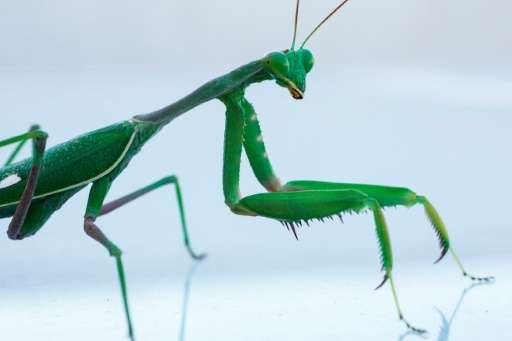Making a meal of it: Praying mantis cannibalism explained

When a female praying mantis bites the head off her sexual partner, it is probably not out of anger.
According to a study published Wednesday, the mantis' proclivity for devouring her mate may have evolved to better provide for her offspring.
In eating the male, a female ensures he continues to provide for their progeny even after death—as food.
"Sexual cannibalism... increases male investment in offspring," said William Brown of the State University of New York at Fredonia, who co-authored a paper published in the journal Proceedings of the Royal Society B.
For the study, Brown and Katherine Barry from Australia's Macquarie University fed crickets dosed with traceable radioactive amino acids to male mantises.
They then allowed the spindly insects to mate.
For half the males it turned out to be their final act, while the lucky rest were rescued by their human handlers immediately after pairing.
The scientists tracked the flow of radioactive proteins through the bodies of the cannibalistic females, and through their eggs.
In females those who ate their mates, "there is an increase in the number of eggs produced subsequent to cannibalism," Brown told AFP by email.
A large proportion of the amino acids were absorbed not by the female, but passed on to the mini mantises.
In nature, male mantises are eaten by females in about 13-28 percent of sexual encounters, according to the study.
During the mantis mating season, males can make up as much as 63 percent of the female diet.
Such behaviour, said the team, can "be considered an extreme case of male parental investment."
Sexual cannibalism is when the female of a species consumes the male before, during or after mating.
It is known to happen in some spiders such as the black widow, and scorpions.
Unlike male mantises, which can mate more than once and with different females before falling for the wrong one, some spiders mate only once in a lifetime, their sex organs damaged during copulation to the extent that they cannot be reused.
More information: Sexual cannibalism increases male material investment in offspring: quantifying terminal reproductive effort in a praying mantis, Proceedings of the Royal Society B, rspb.royalsocietypublishing.or … .1098/rspb.2016.0656
Journal information: Proceedings of the Royal Society B
© 2016 AFP



















